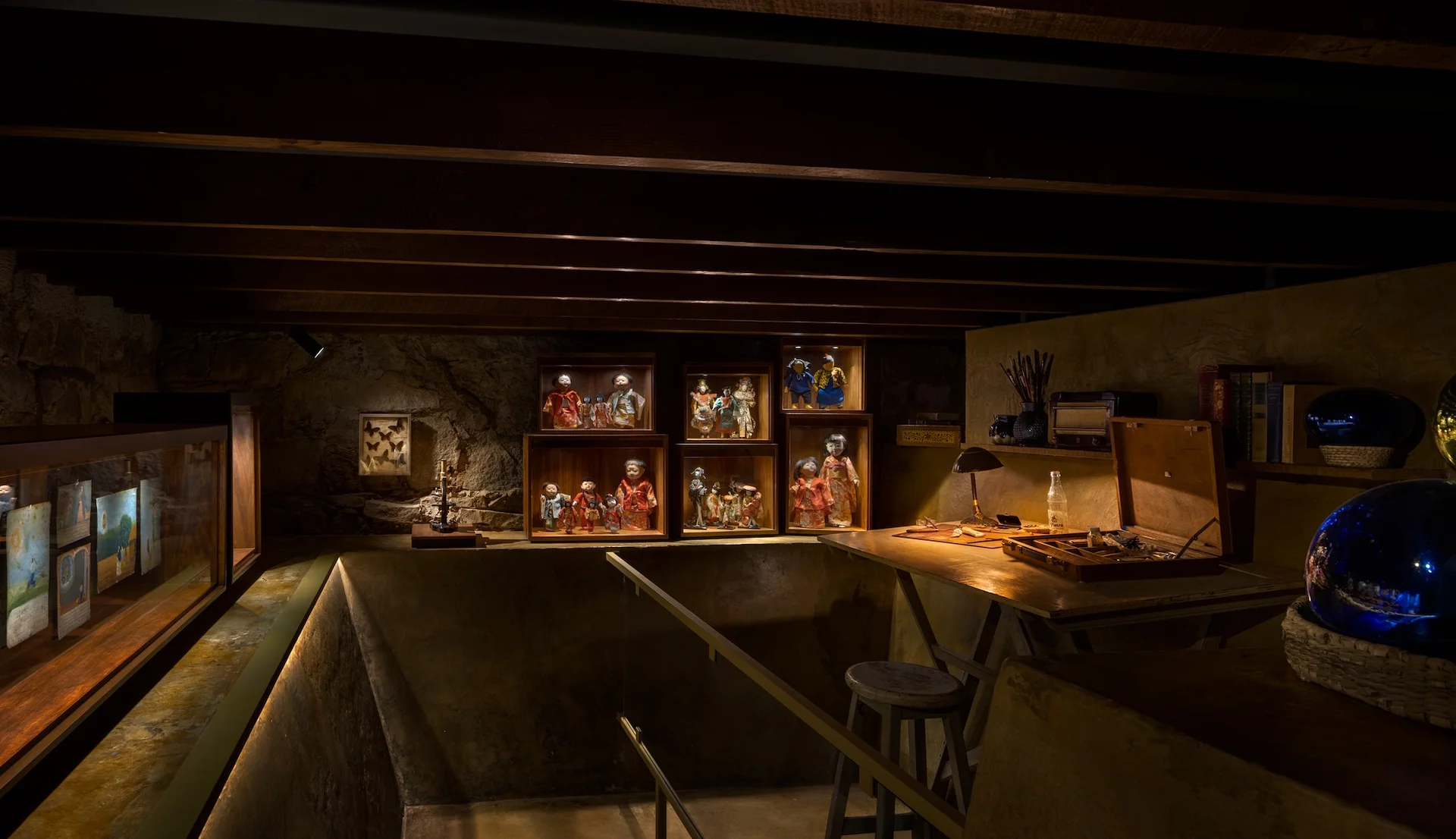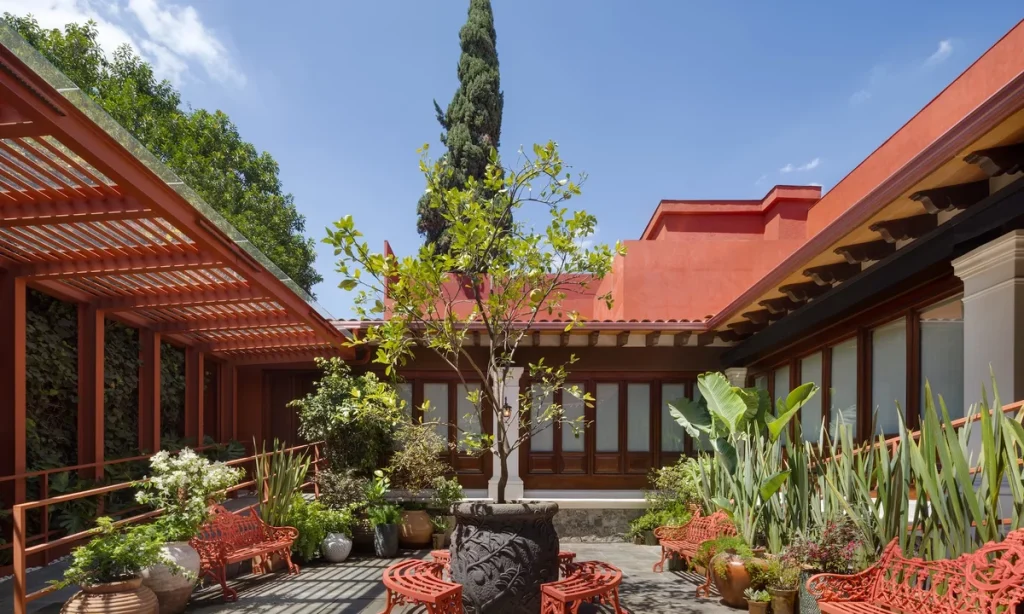“This museum was home to the Kahlo family for four generations; we open it to share our legacy.” Thus reads a sign at the entrance of Museo Casa Kahlo, a new institution dedicated to Frida Kahlo that opened on 27 September.
Memories, family ties and storytelling shape the intimate space, located a five-minute walk from Casa Azul in Mexico City’s Coyoacán neighbourhood—Kahlo’s central pilgrimage enclave. The museum is housed inside the Kahlo family’s historic home, acquired in 1930 and later owned by Frida’s younger sister, Cristina, who passed it down to her descendants.
“The museum resulted from over ten years of family efforts,” Mara de Anda Romeo, Frida’s great-granddaughter, tells The Art Newspaper. Museo Casa Kahlo’s collection comes from the archive of Isolda Kahlo (Cristina’s daughter), who kept it private for years before cataloguing it. “Isolda also kept many everyday objects—even some faucets—that were reinstated,” De Anda says.
The museum’s narrative centres on Frida’s family—alternating between a focus on traditional displays, private domestic spaces and audiovisual elements. In the first rooms, Frida’s father, Guillermo, who inspired his daughter early on, appears through his photographs of Mexico’s architecture and an immersive re-creation of his darkroom.
The kitchen at Museo Casa Kahlo Photo: Constanza Ontiveros Valdés
In most spaces, however, the focus is on Frida’s ties to the other women in her family, expressed through letters, the archive’s main holdings. (“We come from an empowered and tight feminine lineage,” De Anda says.) Letters are transformed into audio recordings, projections or wallpaper. In Cristina’s bedroom, a wall shows a 1946 letter that Frida wrote after surgery; excerpts from other correspondence are projected in the dining room. A few works of art, like sketches and Tray of Poppies—painted in Frida’s youth—are scattered throughout. These appear alongside personal objects, pre-Hispanic bead necklaces and traditional dresses, all reflecting Frida’s world.
Museo Casa Kahlo, nicknamed Casa Roja and “the family’s heart”, cannot escape comparisons to Casa Azul, which is much larger in both scale and scope. Yet the family says the focus here is different.
“Casa Azul is the artist, and here is Frida in flesh and bone who cried and laughed,” Mara Romeo Kahlo, Cristina’s grand-daughter, said at the ribbon-cutting ceremony on 25 September. (She lived in the house until 2023.)
Still, shared motifs emerge between the two houses—as in the case of their kitchens. Like at Casa Roja, Casa Azul features bird-themed wall decorations. Here, clay-outlined doves hold a ribbon, a motif repeated in furniture pieces and pottery dishes. This is no surprise: Frida loved birds, a motif often seen in her art.
The kitchen at Museo Casa Kahlo, like the house’s other spaces, has been restored to its original look. Frida’s only known mixed-media mural work (from around 1949) features flowering fruit trees and small colourful birds on a pale pink background.
“Years ago, Isolda had covered part of the mural in white paint, but my mother remembered it was there and guided the restorers to uncover it in 2024,” De Anda says. Restoration also revealed the ribbon’s phrase, El mesón de los gurriones—a humorous pun on gorrones (freeloaders) and gorriones (sparrows)—referring to “the constant presence of Frida’s students, the Fridos“, De Anda says. She adds that a detailed study of the mural is planned.

Frida Kahlo’s secret room in the basement Photo: Rafael Gamo for Rockwell Group
The house’s basement, accessible via a steep staircase, is where Frida once retreated to paint and write. One room displays framed family letters revealing Frida’s affectionate, tender side.
“Isolda, my dear, this is a gift from your aunt Fisita, who adores you, in recognition of your good behaviour and the path you are beginning,” reads a 1945 letter from the artist. An adjacent room re-creates a studio space with ex-votos (devotional images), one by Frida.
“Her hidden basement is the heart of the experience: a candlelit space where Frida’s creative energy feels tangible,” says the architect David Rockwell, who designed this and other spaces in the house, including the courtyard. (The Mexican architect Mariana Doet Zepeda Orozco oversaw renovations.)
To the Kahlo family, Museo Casa Kahlo extends to the recently established New York-based non-profit Fundación Kahlo, which supports the museum and champions Latin American art. “This is part of the family’s fight to tell a story that was denied to them,” says Adán García Fajardo, the Museo Casa Kahlo’s director. (The Kahlo family has long contested the control of the artist’s image by the Frida Kahlo Corporation, which holds international rights.)
Although uneven in some aspects, the museum conveys a universal truth: family bonds are everything, especially in hardship. This is what most humanises Frida’s mythical figure.
